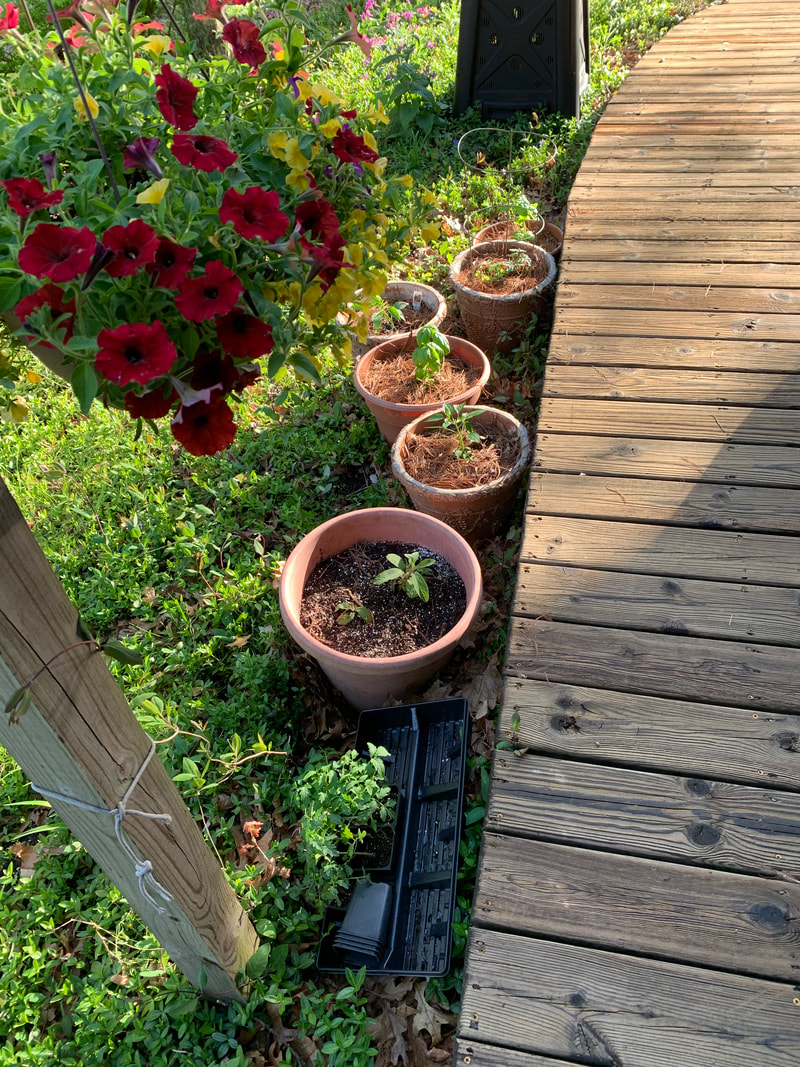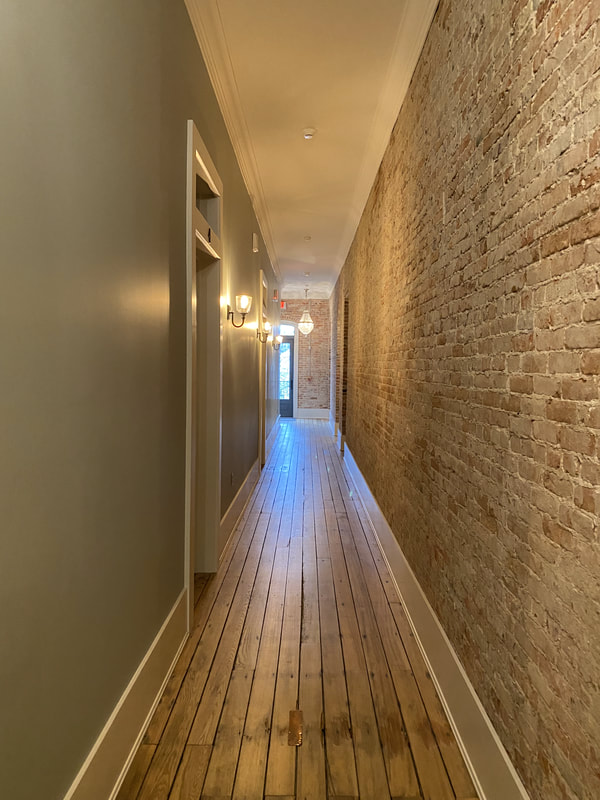|
Article by Donna Iverson. Photo by Mary Tupper. No, not that kind of pot. Sorry to disappoint. We’re talking terracotta pot gardening, Terracotta pots, which translates from the Italian, as “burnt earth” is instantly recognizable by its reddish brown color. These fired clay pots are heavy, unglazed, and have a small hole in the bottom for drainage. The red color comes from the iron oxide that is released during kiln firing. The advantages of gardening with terracotta pots are many. In my opinion, first and foremost is aesthetic appeal. The colors of red and green, being opposite on the color wheel, makes plant leaves pop out against the earthy colored pot. And terracotta gives an ancient natural look to your garden. Terracotta comes in many shapes and sizes and can be bought with matching terracotta saucers. Compared to other plant pots made of plastic, metal, glazed clay, or porcelain, they are also relatively inexpensive and widely available. These pots are heavy and won’t blow over on your patio or deck. They have excellent drainage and the pots are porous allowing both air and moisture to be exchanged with the outside. In effect, the pots breathe. They are also recyclable. On the downside, they do need watering more often although some plants prefer a drier medium, like succulents and Mediterranean herbs. But your vegetables will be happy growing in terracotta pots also, with many a tomato finding a happy home there. Plus they can be easily moved around to accommodate changing conditions and easily replanted if needs be. Come fall, they can be brought inside. When buying a terracotta pot it is good to soak them overnight so that the clay doesn’t wick water away from the soil. If after a few years they develop a white stain, the pots can be soaked in vinegar water to remove it. A neat trick when filling your pots with plants is to insert a coffee filter in the bottom so that the potting soil doesn’t leak out through the bottom hole. You will find many terracotta pot shapes and sizes. There are tiny pots smaller than teacups and large pots that you may need help lifting. The standard terracotta pot is as tall as it is wide. English style pots have slanted sides and a rim, while Italian pots are rimless and have only slightly slanted sides. There is a pot form called Long Tom which is tall and rimless and diminutive pots that are only half as tall as wide and are used to plant bulbs. Most of our terracotta plants are imported from Europe or Mexico although there are a few American pottery manufacturers who produce them, like Marshall Pottery in Texas https://marshallpottery.com If you are a beginning gardener or a seasoned one, adding a few pots of plants, whether flowers or vegetables, to any patio or yard makes a great visual statement and will provide you with much summer pleasure.
0 Comments
Photo and article by Donna Iverson Plants that self seed in unexpected places have always intrigued me. ...especially when they are hybridized flowers gone rogue. So when I spotted this sweet little nasturtium growing along the edge of a raised bed in my community garden, it gave me an idea. Maybe I could plant nasturtium seeds in sidewalk cracks, waste places and abandoned city lots. And more people could enjoy these mini “ life in the cracks” surprises. So I bought some Nasturtium seeds, which are large and round and easily pushed into the ground. In fact, Nasturtiums are a perfect plant for this undertaking. They will grow in sandy soil and need little watering or fertilization. Just the conditions we have here in West Michigan. And it turns out there is a name for what I’m doing...guerilla gardening. Of course, Nasturtiums are very happy in your yard or garden also. They are easy to grow, making them good plants for beginning gardeners and children. Seeds can be planted after the last spring frost about half an inch deep in the soil, and plants will reliably produce leaves and flowers in a relatively short time. Traditional flower colors include red, yellow, orange, and creamy white. There are many other reasons to plant Nasturtiums. Planting them near the vegetable garden can serve as an aphid trap, drawing garden pests away from the produce. Nasturtiums also attract bees, butterflies and hummingbirds if a pollinator garden is what you are after. And the trailing varieties will cover an unsightly wall or fence. A member of the mustard family, Nasturtiums are native to Peru and symbolize patriotism. This annual flowering herb will self sow and grows wild in our southern and western states. It’s name comes from the French word meaning “nose twister.” Popular varieties include Alaska Salmon, Orchid Flame, Cherry Rose, Purple Emperor, Black Velvet, Canary Creeper, and Bloody Mary. There is also a variety called Yeti, named after the ape-like mythical creature of the Himalayan mountains. Cooks and foragers will find many uses for Nasturtiums. All parts of the plant are edible including leaves, flowers and seed pods. It can be added to soups, salads, omelettes, and pizza. The lily-pad leaves make a tasty pesto and it is high in Vitamin C, iron and lutein. |
Archives
April 2024
Categories |


 RSS Feed
RSS Feed